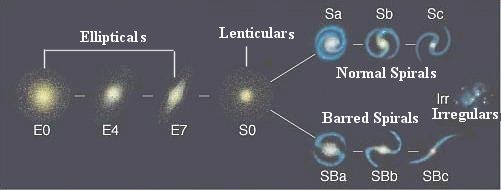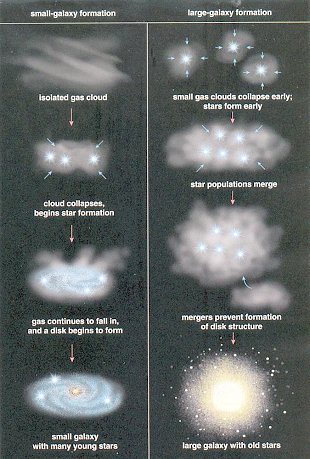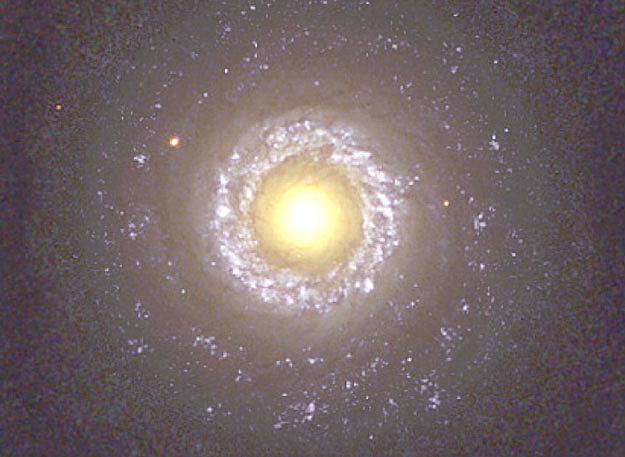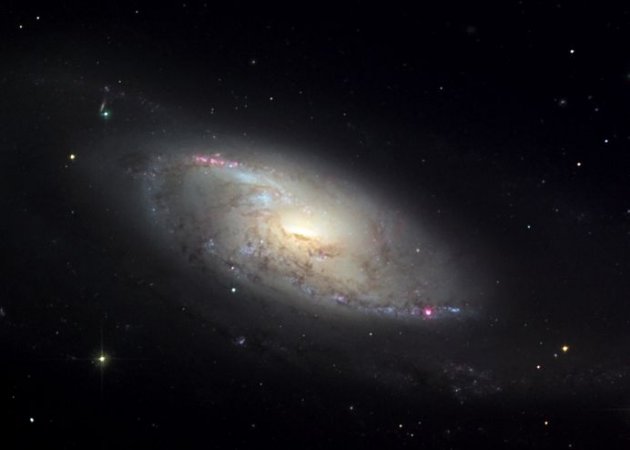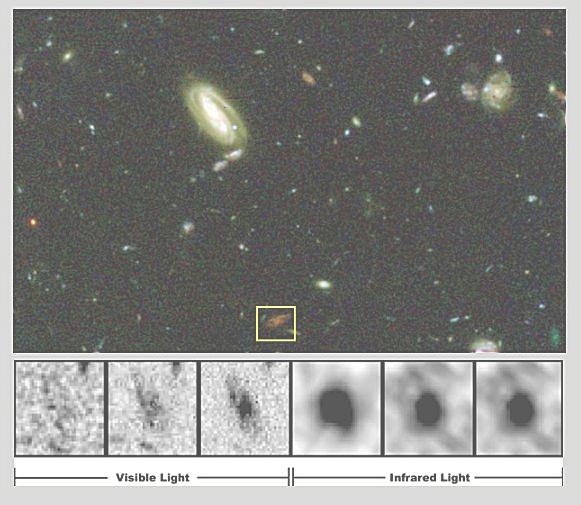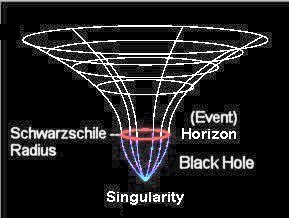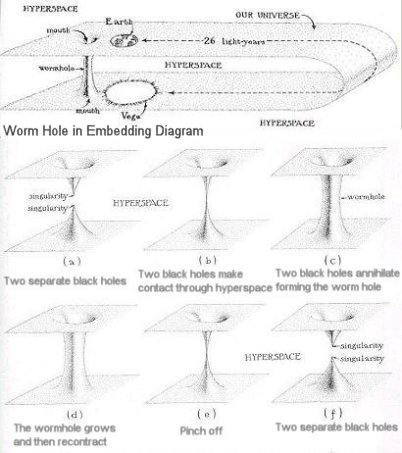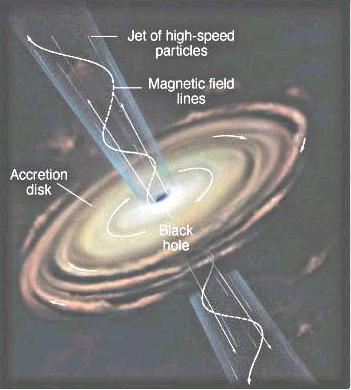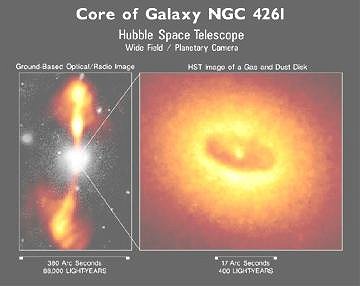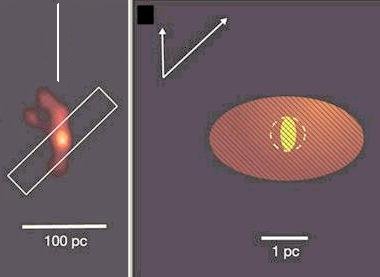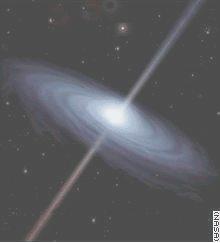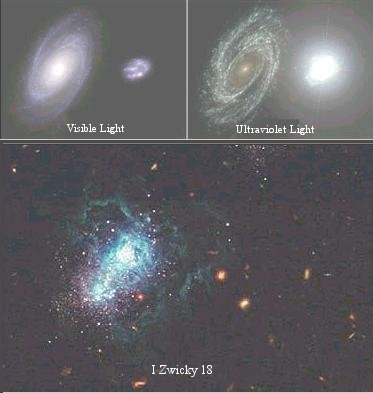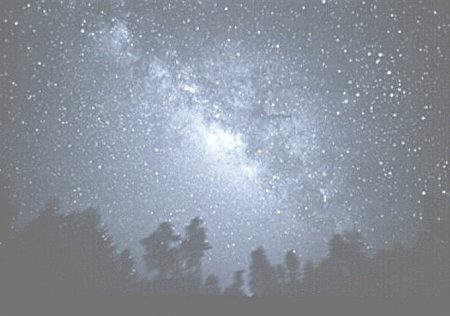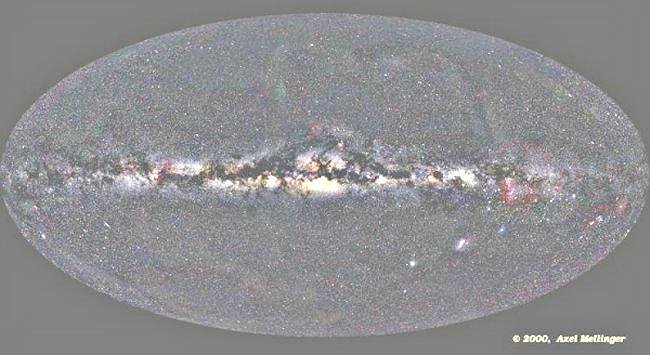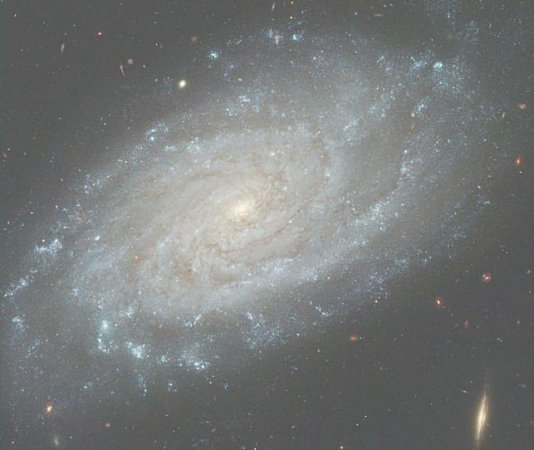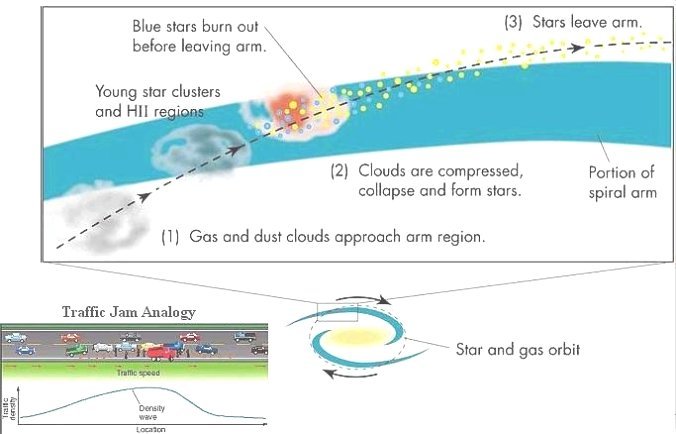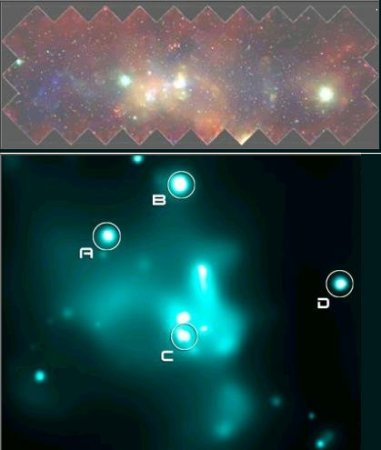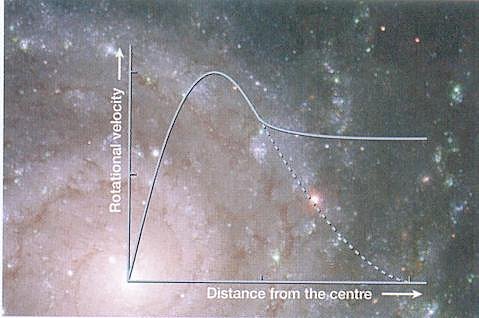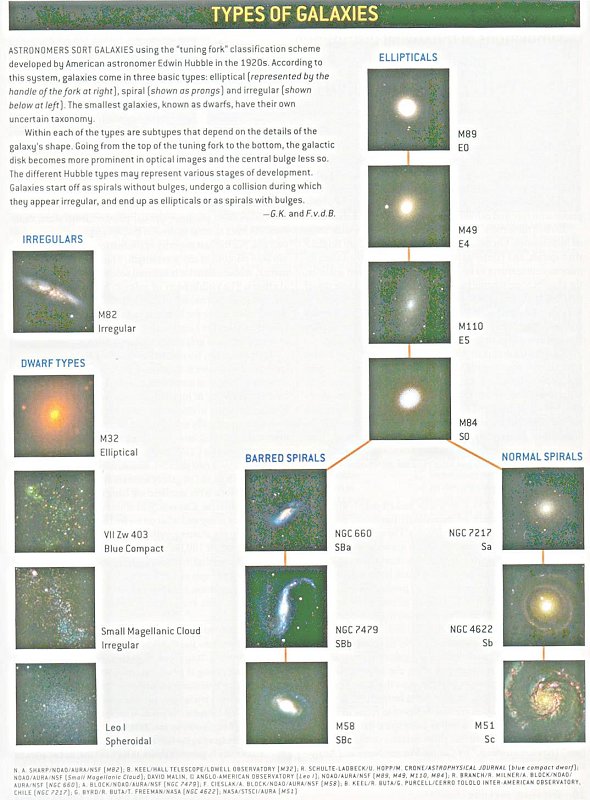
Spiral galaxies, denote by S, have a central nucleus surrounded by a flattened disc with the stars, gas, and dust organized into a pattern of spiral arms. They are categorized according to the size of the nuclear bulge, the tightness of the spiral pattern, and the degree of "patchiness" in their arms. S0 is the transitional type called lenticular galaxy. An "Sa" galaxy has a large central nucleus and tightly wound, relatively smooth, arms; an "Sb" galaxy has a somewhat smaller nucleus and less tight arms that often contain conspicuous HII regions and clusters of hot young stars; and an "Sc" galaxy has a relatively small nucleus and loosely wound "knotty" arms dominated by numerous HII regions and youthful clumps of stars. In barred spirals, denoted by "SB", the arms emerge from the ends of what looks like a rigid bar of luminous matter that straddles the nucleus.
Irregular galaxies, which have no obvious nucleus or ordered structure, are denoted by "Irr" and are broadly subdivided into "Irr I" and "Irr II". Irr I galaxies display evidence of recent or ongoing star formation (e.g., OB associations (young stars) and HII regions (luminous nebulas)); Irr II galaxies have a disturbed appearance, and their shapes seem to have been distorted by violent internal activity or by collisions or close encounters with other galaxies.